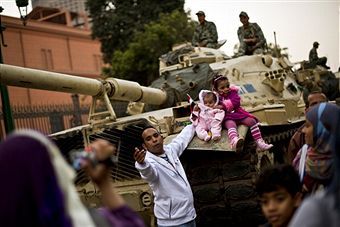 The Middle East is set for renewed displays of public anger towards the region’s
governments. Events in Bahrain are particularly worrying. Troops took control of the capital, killing at least four protesters in the worst violence in the Gulf kingdom in decades.
The Middle East is set for renewed displays of public anger towards the region’s
governments. Events in Bahrain are particularly worrying. Troops took control of the capital, killing at least four protesters in the worst violence in the Gulf kingdom in decades.
The trouble in Bahrain, which houses the U.S. Navy’s 5th fleet and is home to a large U.S. military base, illustrates a point Ben Judah and I make in a new article: that the three pillars of US post-World War II power in the Middle East – commercial ties, military bases and client states – are crumbling:
“A new Middle East is taking shape, buffeted by Pacific trade winds and owing allegiance to more than one power. Its geopolitical architecture is being shaped by the North African revolutions, Turkish assertiveness, Iranian intransigence, and the Iraq debacle.”
To give just one example, look at the region’s trade patterns. China is now a bigger trading partner than the US in both Qatar and the UAE. And almost a quarter of Qatar’s trade is with China, compared to just over 5 percent with the US. Likewise, 37 percent of the UAE’s trade is with China, India, and South Korea. To many Middle East states, what China wants is now just as important as US interests.
Though it is unclear how far the protests will succeed, particularly in Bahrain, Yemen, Libya but also Syria, one thing is crystal clear: the West will not find the new strategic terrain easy to navigate.






Comments